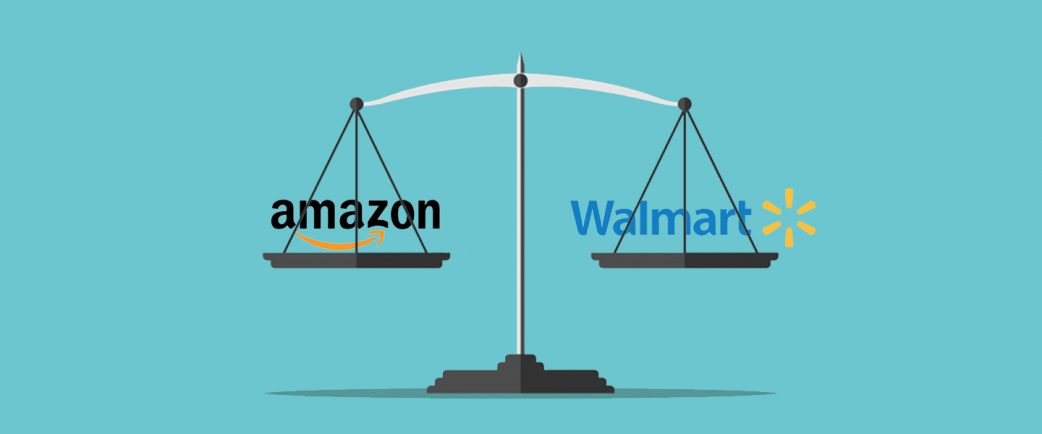‘The culture is different’: How Walmart became more like Amazon in 2024

While the legacy retailer still has a long way to go, Walmart is quickly catching up in many of the areas in which it has long been outmatched by Amazon.
Over the course of this year, Walmart continued to grow its Amazon Prime competitor, Walmart+, with new services including veterinary telehealth and Burger King discounts. This fall, Walmart announced a new name and vision for its first-party data platform, Walmart Luminate. The service, which will be called Scintilla beginning next year, helps inform marketplace sellers and advertisers with shopping and inventory figures from Walmart’s stores and supply chain. In December, Walmart wrapped up its $2.3 billion acquisition of TV maker Vizio, giving the retailer its own streaming service and TV operating system on which to serve ads through its Walmart Connect advertising business, akin to Amazon owning Prime Video and selling Fire TVs.
Walmart’s investments in e-commerce and this Amazon-like flywheel of services aimed to benefit each other are beginning to pay off, company leaders suggest.
“The way that our team has embraced digital and change gives me optimism that not only can we deliver over the next few years but we can deliver in a longer-term way because the culture is different,” CEO Doug McMillon said at a Morgan Stanley conference in New York in December. “Profits are coming from this change in the composition of the business.”
Amazon’s $61 billion in e-commerce sales during the third quarter about doubled Walmart’s, but Walmart is seeing much faster year-over-year e-commerce growth of 27% versus Amazon’s 7%. Walmart’s marketplace saw record sales during this year’s Black Friday and Cyber Monday period and had its fifth quarter in a row of more than 30% sales growth. E-commerce sales as a whole made up 18% of Walmart’s sales in the third quarter, up from 15% a year before, Walmart’s CFO John David Rainey told analysts in November.
“We didn’t know what the e-commerce model was going to look like today. We just knew customers wanted it, and it was painful to go through all those investments.” McMillon said at the investment conference. “You guys saw the operating income percentage of the company come down as that happened, so it was a bet on the future, that this big team of associates could figure out how to get the company positioned for the next generation of retail.”
Marketplace Pulse reported in September that Walmart’s marketplace reached 150,000 active sellers — up from just 50,000 in 2022. Meanwhile, Amazon has added 5 million sellers since 2018, per the same source. Walmart’s retail media network, Walmart Connect, grew 26% in the U.S. in the third quarter.
It’s Walmart’s inroads in advertising alongside its e-commerce growth that has made it a worthy Amazon competitor. Both have grown their advertising businesses to a scale difficult for any other retailers to match. Others like Dick’s Sporting Goods, Saks and Wawa have launched new retail media networks, but not all with large third-party marketplaces to match.
“What Walmart has created is a much more liquid market for its ads than other retailers have,” said Bryan Gildenberg, founder and CEO of Confluencer Commerce, adding that others are “going to really struggle to get the type of seller traffic that Walmart can generate because of its buying traffic,” Walmart said in the third quarter that marketplace sellers drive growth in the number of advertisers on the platform. Connect’s website tells sellers who advertise on the platform make on average 6.6 times more in sales than those who do not. Marketplace sellers can buy sponsored ads on the website or on digital displays in stores, such as the TV wall.
While Walmart has been growing its digital programs like Amazon, its physical retail footprint and food expertise likely give it a real competitive edge, especially in areas like curbside pick-up. Walmart has embraced e-commerce and advertising while Amazon has made numerous efforts to expand in grocery beyond Whole Foods, most recently with a small-format Amazon Grocery store in Chicago. But Amazon doesn’t have thousands of stores to leverage as pick-up points.
“Walmart has done a very good job in integrating its store base to its e-commerce capabilities; a lot of its fulfillment is being done from its stores, which is really beneficial,” Mickey Chadha, vp of corporate finance and retail analyst for Moody’s Ratings, told Modern Retail. “Walmart is definitely focused on what it’s good at, and Amazon is focusing on what it’s good at. I don’t think either one of them wants to be the other.”

